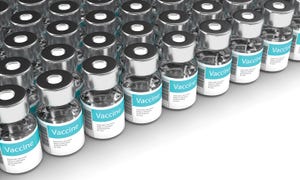Sustainability Impact Report highlights pork industry progress
Pig farmers decreased their carbon footprint by 7.7% and their water use by 25.1% from 1960 to 2015.
January 14, 2019

The United States livestock industry shares the same values as today’s consumer when it comes to sustainability, according to the latest report from the Animal Agriculture Alliance. The 33-page “Sustainability Impact Report” covers animal care, environmental stewardship, responsible antibiotic use and food safety and nutrition across nine industries: dairy, beef, veal, pork, chicken, turkey, egg, sheep and aquaculture.
“Animal agriculture has made great strides in environmental stewardship, animal welfare and overall sustainability over the years,” says Kay Johnson Smith, Alliance president and CEO. “As new technology and research become available, the industry will continue to innovate and improve.”
Environmental stewardship highlights:
According to the Environmental Protection Agency, agriculture accounts for a total of 9% of U.S. greenhouse gas emissions while livestock production is only 3.9%.
Dairy farmers decreased their carbon footprint by 63% from 1944 to 2007.
Since 1977, cattle ranchers have reduced their carbon footprint by 16%.
Pig farmers decreased their carbon footprint by 7.7% and their water use by 25.1% from 1960 to 2015.
The egg industry reduced its carbon footprint by 71% and its water use by 32% since 1960.
Animal welfare highlights:
Hens under the United Egg Producers Certified program account for 95% of all the nation’s laying hens.
The National Chicken Council developed the NCC Animal Welfare Guidelines and Audit Checklist, which have been widely adopted within the chicken industry. These guidelines were updated in 2018.
As of January 2019, more than 72,000 pig farmers and farm employees were Pork Quality Assurance Plus certified.
By 2016, 98% of the U.S. milk supply came from dairy farms and cooperatives enrolled in the Farmers Assuring Responsible Management program.
Nutrition highlights:
Milk provides nine essential nutrients and is also the number one food source of calcium, vitamin D and potassium for all Americans ages 2 years and older.
Today’s pork is 16% leaner and 27% lower in saturated fat compared to 20 years ago.
Lamb is an excellent source of vitamin B12, selenium, zinc and niacin.
One 3-ounce serving of lean beef provides about 50% of the recommended daily value of protein.
One large egg has varying amounts of 13 essential vitamins and minerals, six grams of protein and only 70 calories.
The Animal Agriculture Alliance is an industry-united, nonprofit organization that helps bridge the communication gap between farm and fork.
Source: Animal Agriculture Alliance, which is solely responsible for the information provided, and wholly owns the information. Informa Business Media and all its subsidiaries are not responsible for any of the content contained in this information asset.
You May Also Like



